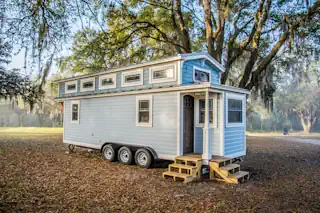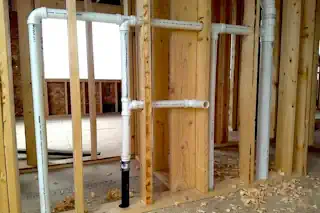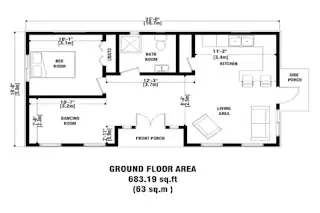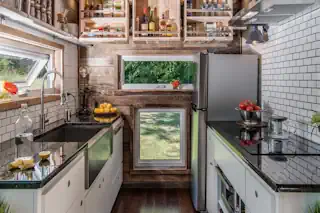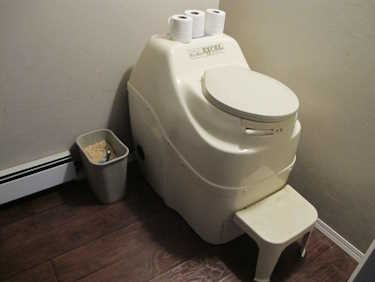The Ultimate Guide to Efficiently Cooling Your Tiny Home
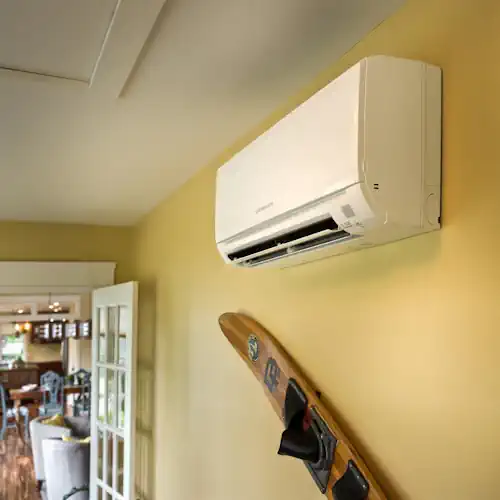
With the appeal of simplified living on the rise, tiny homes have evolved from a niche trend to a lifestyle choice for many. However, as the tiny home movement expands, so does the need for efficient climate control solutions in these cozy living spaces. The challenge of keeping small interiors comfortably cool without compromising on space or sustainability is a puzzle that many tiny home enthusiasts face.
In this guide, we will delve into the complicated task of regulating temperatures in the limited space of a tiny home. We will cover everything from understanding the specific requirements of air conditioning for tiny homes to selecting the most appropriate cooling system for your unique living space. This post is designed to assist you in staying cool in all senses of the word.
Understanding the Cooling Conundrum of Tiny Living
The charm of tiny homes lies in their downsized aesthetic and environmental footprint. However, this very virtue brings a set of challenges when it comes to cooling. With less square footage to cover, traditional cooling units often lead to overcapacity and wasted energy. Tiny home dwellers also grapple with the need for on-demand cooling that doesn’t disrupt the layout or require complex installations. When it’s just you and your home, the last thing you need is an overblown AC bill.
Balancing Comfort with Efficiency
Tiny living requires an air conditioning system that is as mindful of energy use as it is effective at maintaining a comfortable indoor climate. Finding the sweet spot between comfort and efficiency involves a mix of smart design, ventilation, and innovative cooling technology.
Size Matters in More Ways Than One
Not only do tiny homes require a physically smaller cooling solution, but the system must also be appropriately sized for the layout, insulation, and typical climate of the area. A system too large for the space will cycle on and off frequently, leading to uneven cooling and unnecessary wear and tear.
Sizing up Your Options for Tiny Home Climate Control
When it comes to tiny house air conditioning, one size certainly doesn’t fit all. Fortunately, several options cater to the unique needs of tiny home dwellers. From established technologies to cutting-edge innovations, there’s a smorgasbord of choices to explore.
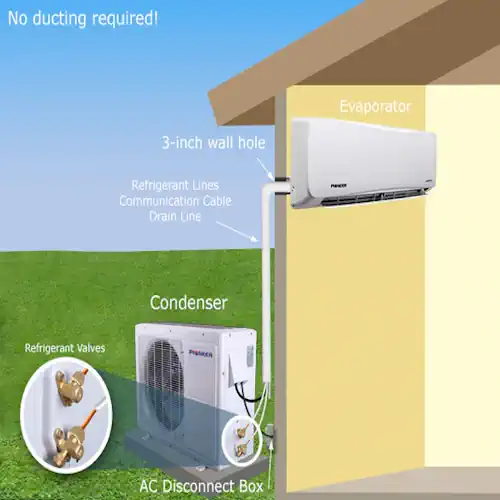
Top 10 Air Conditioner Options for a Tiny Home
Window Units: Compact and efficient, window air conditioners are a traditional choice that can effectively cool small spaces without taking up valuable floor space.
Portable Air Conditioners: Flexible and easy to move, portable units are ideal for tiny homes on wheels or for those who prefer a temporary cooling solution.
Split Systems: A ductless mini split system offers a balance of efficiency and cooling power, with outdoor compressors and indoor air handling units.
Evaporative Coolers: Also known as swamp coolers, these are best suited for dry climates and work by evaporating water to cool the air, using less energy than a traditional HVAC unit.
Ceiling Fans: While not air conditioners, ceiling fans can significantly improve air circulation and provide a cooling effect, making them a sustainable option.
Smart Air Conditioners: Featuring Wi-Fi connectivity and smartphone control, smart ACs allow for precise temperature management and energy savings.
Solar-Powered Air Conditioners: Harnessing solar energy, these units offer a green solution to cooling needs, reducing reliance on traditional power sources.
Geothermal Cooling Systems: Utilizing the earth’s stable underground temperature, geothermal systems are a highly efficient way to cool and heat tiny homes.
12V DC Air Conditioners: Specifically designed for off-grid living, these units run on direct current and can be powered by solar panels or batteries.
Heat Pumps: Capable of heating and cooling, heat pumps are an all-in-one solution that leverages the outside air to maintain comfortable indoor temperatures year-round.
The Promise of Innovations in Heating and Cooling System Technology
New technologies are emerging that promise to revolutionize the way we cool our spaces. Air conditioning innovations such as thermoelectric and mist-based systems are gaining traction for their potential to provide consistent comfort while drastically reducing energy consumption. One key factor in any ac system is the location of the tiny house.
Prioritizing Eco-Friendly Air Conditioning for Your Tiny Abode
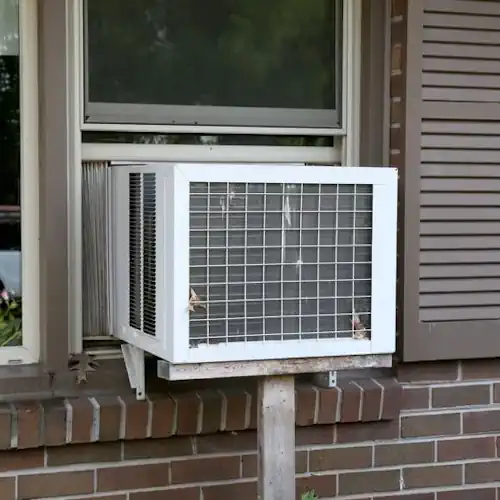
With environmental impact at the forefront of the tiny living philosophy, sustainability is a non-negotiable consideration for air conditioning. Eco-friendly options not only align with the ethos of a tiny home but can also translate into long-term savings and a greener footprint. Tiny home living is much more than just giving up space.
Investing in Energy Star Certified Systems
The Energy Star label is a reliable indicator of an appliance’s energy efficiency. Opting for an Energy Star certified air conditioning unit ensures that it meets stringent guidelines for reduced energy consumption without sacrificing performance.
Harnessing the Power of Natural Ventilation
Supplementing or even replacing traditional air conditioning with natural ventilation is a cost-effective and eco-friendly strategy. Cross-ventilation through strategically placed windows and skylights can be surprisingly effective in maintaining a comfortable indoor environment. The addition of a ceiling fan can further enhance both heating and cooling options.
Incorporating Smart Controls and Automation
Smart thermostats and control systems provide granular management of your indoor climate, ensuring that your cooling system operates only when necessary. They can learn your habits, adjust settings to optimize comfort, and even be controlled remotely, all while keeping the environment in mind.
Selecting the Right Air Conditioning Unit for Your Tiny Home
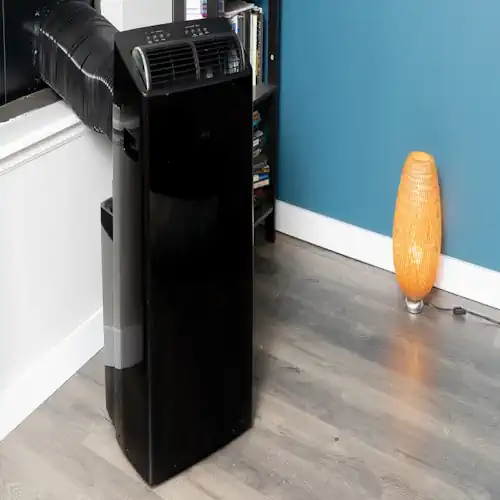
Navigating the sea of air conditioning options can be overwhelming, but with a clear understanding of your tiny home’s needs and your personal preferences, the choice becomes more clear-cut.
Determining Your Tiny Home’s Cooling Load
Calculating your tiny home’s cooling load is the first step in selecting the right air conditioning unit. The cooling load is influenced by factors such as the home’s square footage, insulation, layout, and number of occupants. Tools and guides are available to help you make this evaluation.
Balancing Upfront Cost with Long-Term Benefits
The initial cost of an air conditioning unit is an important factor, but it’s just as crucial to consider the long-term energy savings. An efficient system may cost more upfront but can pay for itself over time through reduced utility bills, particularly in a tiny home where energy use is typically lower.
Weighing Financial Investment Against Comfort
Ultimately, the best air conditioning unit for your tiny home is one that offers a comfortable living environment at an affordable cost. Consider your budget and individual comfort needs to make an informed decision that you won’t regret.
Innovative Cooling Solutions That Go the Extra Mile
Some tiny home owners have gone off the beaten path to find creative ways of keeping cool. From repurposing commercial cooling systems to harnessing solar power for air conditioning, these inventive solutions demonstrate that there’s no one-size-fits-all approach to tiny home climate control.
Lessons Learned from Unconventional Cooling Setups
Not every cooling solution hits the mark, and understanding the reasons behind less successful attempts is just as illuminating. By examining what hasn’t worked for others, you can refine your approach and make a more informed decision when selecting your air conditioning system.
Do-It-Yourself Air Conditioning Hacks for the Creative Tiny Home Dweller
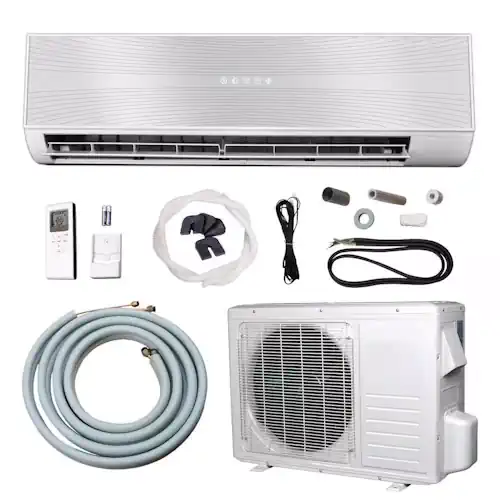
For the handy and resourceful, there’s a range of DIY projects to improve air circulation and cooling in your tiny home. These cost-effective and sometimes quirky solutions can be the perfect fit for those who love to tinker and experiment.
Retrofitting Existing Systems for Better Cooling Performance
With a bit of ingenuity, existing cooling systems can be optimized for improved efficiency. Simple upgrades like cleaning filters, sealing ducts, and enhancing insulation can go a long way in ensuring your air conditioning works as effectively as possible.
Low-Cost Strategies for Chilling Out
Sometimes the simplest solutions are the most effective. DIY tactics such as using reflective window films, painting your roof a light color to reflect heat, or creating a DIY swamp cooler are low-cost options that can significantly reduce the need for mechanical cooling.
Enlisting the Power of Fans and Circulation Aids
Fans are a staple in the cooling arsenal of any tiny home, but their strategic placement and use can make all the difference. By optimizing the airflow with fans, vent fans, and destratification fans, you can disperse heat and maintain a more even temperature throughout your tiny home.
Cooling Off the Conclusions
When it comes to cooling a tiny home, adaptability and simplicity are key. By understanding the specific challenges of tiny living, exploring a variety of air conditioning options, and prioritizing sustainability, you can create a comfortable living environment that’s tailor-made for you and your tiny home.
In the end, successful tiny home air conditioning is about finding a solution that not only cools your space effectively but also integrates seamlessly into your lifestyle. Whether you opt for a high-tech mini-split system, get crafty with DIY cooling projects, or a blend of both, the goal is to make your tiny home a cool oasis you can retreat to with relief and peace of mind.
Frequently Asked Questions (FAQs)
What is the most energy-efficient air conditioning system for a tiny home?
Energy Star certified mini-split systems are often considered the most energy-efficient option for tiny homes. They offer precise control over cooling and can significantly reduce energy consumption compared to traditional HVAC systems.
Can I really cool my tiny home using natural ventilation?
Yes, strategic use of natural ventilation through cross-ventilation, skylights, and vent fans can effectively reduce indoor temperatures and improve air quality, especially in climates where the temperature drops at night.
How do I calculate the cooling load for my tiny home?
Calculating your tiny home’s cooling load involves evaluating factors like square footage, insulation levels, window size and direction, and occupancy. Online calculators and professional assessments can provide you with a more accurate estimation.
Are there any low-cost air conditioning options for tiny homes?
Yes, in addition to utilizing fans and natural ventilation, DIY cooling solutions such as using reflective window films, painting the roof with reflective paint, or creating a DIY swamp cooler can be cost-effective ways to keep your tiny home cool.
How do smart thermostats contribute to cooling efficiency?
Smart thermostats optimize cooling by learning your habits and adjusting the temperature accordingly. They can turn off the air conditioning when you’re not home and cool down your space just before you return, reducing energy waste and lowering utility bills.
Can I use solar power to run my tiny home’s air conditioning?
Solar power is a viable option for running air conditioning systems in tiny homes. Some homeowners use solar panels to generate electricity for mini-split systems or other energy-efficient cooling solutions, significantly reducing their environmental footprint.
